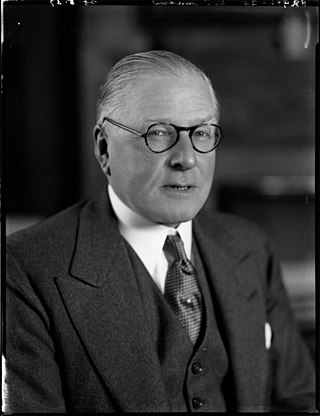
John Colin Campbell Davidson, 1st Viscount Davidson,, known before his elevation to the peerage as J. C. C. Davidson, was a British civil servant and Conservative Party politician, best known for his close alliance with Stanley Baldwin. Initially a civil servant, Davidson was private secretary to Bonar Law between 1915 and 1920. After entering parliament in 1920, he served under Baldwin as Chancellor of the Duchy of Lancaster between 1923 and 1924 and as Parliamentary and Financial Secretary to the Admiralty between 1924 and 1926. From 1926 to 1930 he was Chairman of the Conservative Party. He was once again Chancellor of the Duchy of Lancaster between 1931 and 1937, firstly under Ramsay MacDonald and from 1935 onwards under Baldwin. On Baldwin's retirement in 1937, Davidson left the House of Commons and was ennobled as Viscount Davidson. Despite being only 48, he never took any further active part in politics. His wife Frances, Viscountess Davidson, succeeded him as MP for Hemel Hempstead. Lord Davidson died in London in 1970.

Major Sir William Newenham Montague Orpen, was an Irish artist who mainly worked in London. Orpen was a fine draughtsman and a popular, commercially successful painter of portraits for the well-to-do in Edwardian society, though many of his most striking paintings are self-portraits.
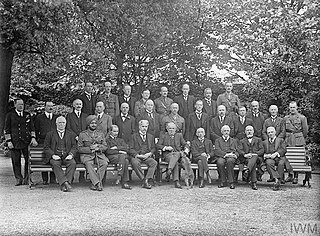
Liberal David Lloyd George formed a coalition government in the United Kingdom in December 1916, and was appointed Prime Minister of the United Kingdom by King George V. It replaced the earlier wartime coalition under H. H. Asquith, which had been held responsible for losses during the Great War. Those Liberals who continued to support Asquith served as the Official Opposition. The government continued in power after the end of the war in 1918, though Lloyd George was increasingly reliant on the Conservatives for support. After several scandals including allegations of the sale of honours, the Conservatives withdrew their support after a meeting at the Carlton Club in 1922, and Bonar Law formed a government.
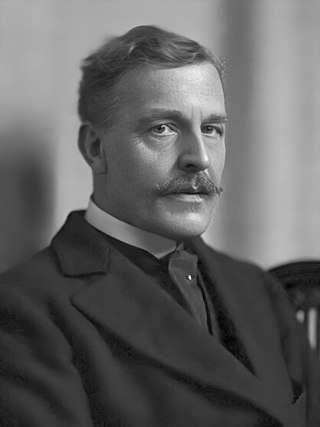
Sir James Guthrie was a Scottish painter, associated with the Glasgow Boys. He is best known in his own lifetime for his portraiture, although today more generally regarded as a painter of Scottish Realism.

The Allies, or the Entente, were an international military coalition of countries led by France, the United Kingdom, Russia, the United States, Italy, and Japan against the Central Powers of Germany, Austria-Hungary, the Ottoman Empire, and Bulgaria in World War I (1914–1918).
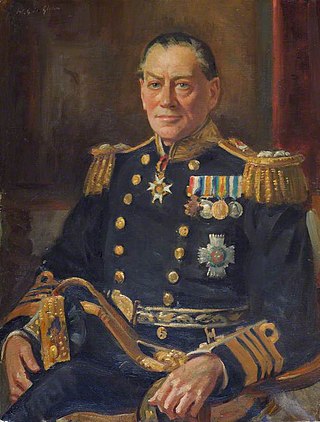
Admiral Sir Herbert William Richmond, was a prominent Royal Navy officer, described as "perhaps the most brilliant naval officer of his generation." He was also a top naval historian, known as the "British Mahan", the leader of the British Royal Navy's intellectual revolution that stressed continuing education especially in naval history as essential to the formation of naval strategy. After serving as a "gadfly" to the British Admiralty, his constructive criticisms causing him to be "denied the role in the formation of policy and the reformations of naval education which his talents warranted", he served as Vere Harmsworth Professor of Imperial and Naval History at Cambridge University from 1934 to 1936, and Master of Downing College, Cambridge from 1934 to 1946.
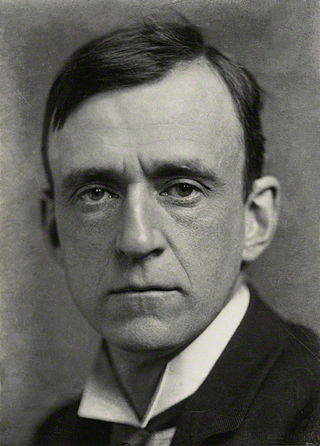
Henry Tonks, FRCS was a British surgeon and later draughtsman and painter of figure subjects, chiefly interiors, and a caricaturist. He became an influential art teacher.

Lieutenant General Sir Henry Edward Burstall, was a Canadian general.

The Allied leaders of World War I were the political and military figures that fought for or supported the Allied Powers during World War I.

General Officers of World War I is an oil painting by John Singer Sargent, completed in 1922. It was commissioned by South African financier Sir Abraham Bailey, 1st Baronet to commemorate the generals who commanded British and British Empire armies in the First World War.

Naval Officers of World War I is a large oil on canvas group portrait painting by Sir Arthur Stockdale Cope, completed in 1921. It was commissioned by South African financier Sir Abraham Bailey, 1st Baronet to commemorate the Royal Navy officers who commanded British fleets in the First World War. Cope's painting was first exhibited at the Royal Academy summer exhibition in 1921 and donated to the National Portrait Gallery that year.
The Hall of Remembrance was a series of paintings and sculptures commissioned, in 1918, by the British War Memorials Committee of the British Ministry of Information in commemoration of the dead of World War I.

A Peace Conference at the Quai d'Orsay is an oil-on-canvas painting by Irish artist William Orpen, completed in 1919. It was one of the paintings commissioned from Orpen to commemorate the Paris Peace Conference in 1919. The work is held by the Imperial War Museum in London.

The Signing of Peace in the Hall of Mirrors, Versailles, 28 June 1919 is an oil-on-canvas painting by Irish artist William Orpen, completed in 1919. It was one of the paintings commissioned from Orpen to commemorate the Peace Conference at Versailles in 1919. The work is held by the Imperial War Museum in London.

To the Unknown British Soldier in France is an oil-on-canvas painting by Irish artist Sir William Orpen, exhibited in one state in 1923 and then modified in 1927. It was one of three paintings commissioned from Orpen to commemorate the Peace Conference at Versailles in 1919. The work is held by the Imperial War Museum in London.
Sir Harold Orme Garton Sargent was a British diplomat and civil servant.
Richard Orpen was an Irish architect, painter, illustrator and designer.














